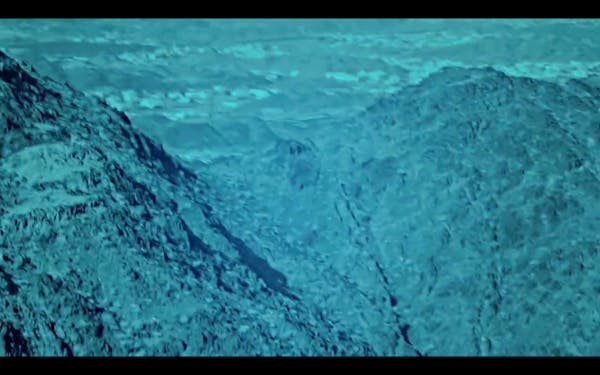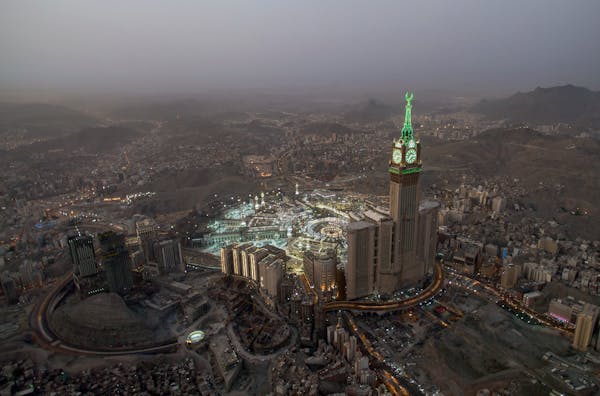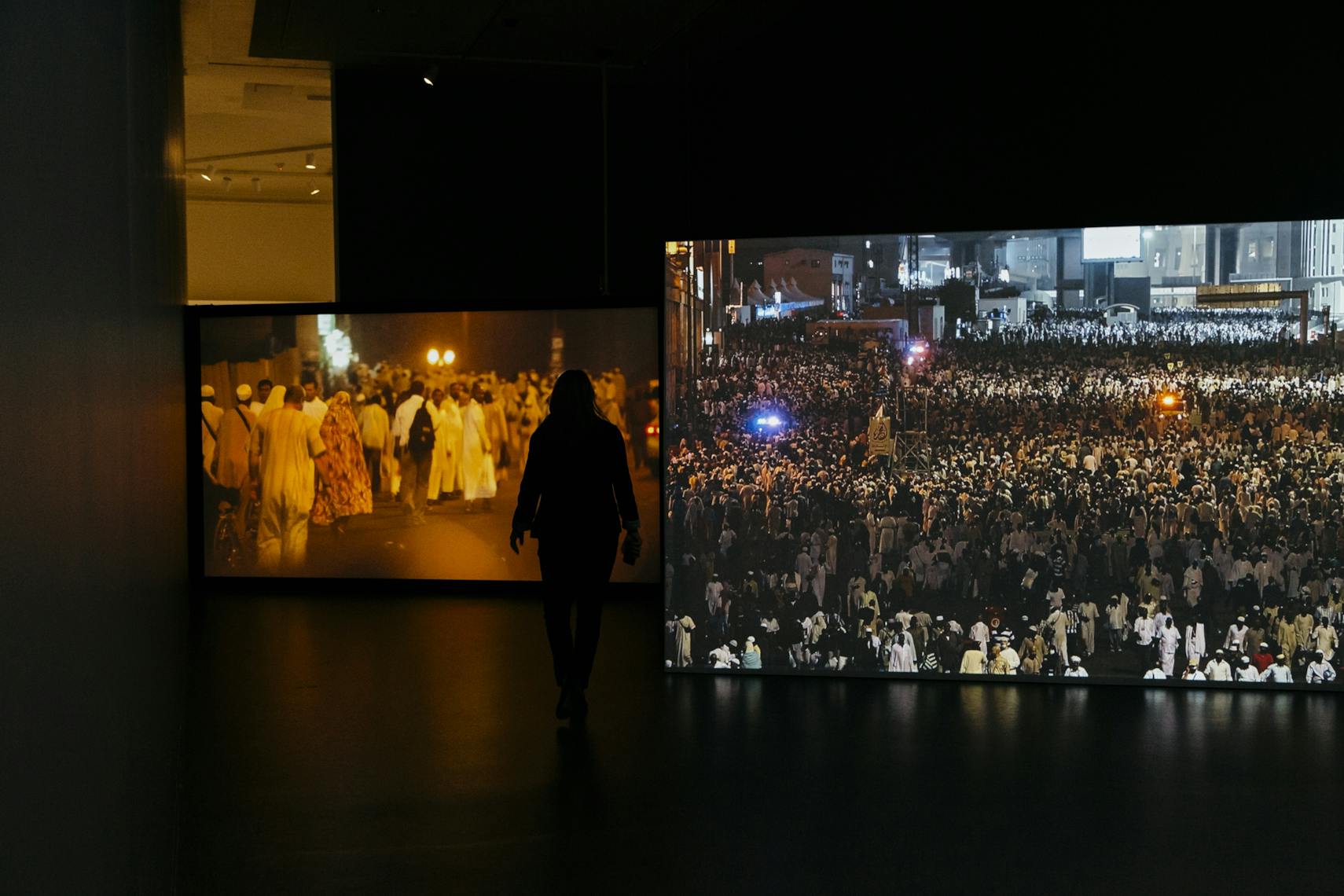











Brooklyn Museum, New York, USA












CURATOR
Catherine J. Morris
Sackler Senior Curator for the Elizabeth A. Sackler Center for Feminist Art, Brooklyn Museum
MUSEUM PARTNER
Brooklyn Museum
ORGANIZER
King Abdulaziz Center for
World Culture
CULTURUNNERS
Director: Stephen Stapleton
culturunners.com
In 2018, The Brooklyn Museum presented Ahmed Mater: Mecca Journeys, an unprecedented look into the changes unfolding in Mecca, by one of the most significant cultural voices documenting the realities of the iconic city.
The photographs in this exhibition are a monumental documentary project, begun in 2008, to bear witness to the extraordinary expansion, demolition, and new construction transforming Mecca. The exhibition featured large-scale photographs of the holy city, as well as more intimate images of its diverse inhabitants, alongside six videos, a sculpture, and an installation piece.
Focusing on the site of the annual hajj pilgrimage for millions of Muslims, as well as the living and working conditions of Mecca’s permanent residents, Ahmed Mater: Mecca Journeys presented a complex portrait of extreme urban redevelopment and the direct effects of the ongoing reconstruction of the holy city.
What started as a desire to show only the changes taking place has ended with a full and exhaustive depiction of a site that can be accessed only by those of the Islamic faith, This collection of images, with their diverse and extreme points of reference, represents the deliberately experimental, meandering, and serendipitous nature of my journey to the heart of Mecca. They are testaments to the cultural and political conditions of contemporary Saudi society.
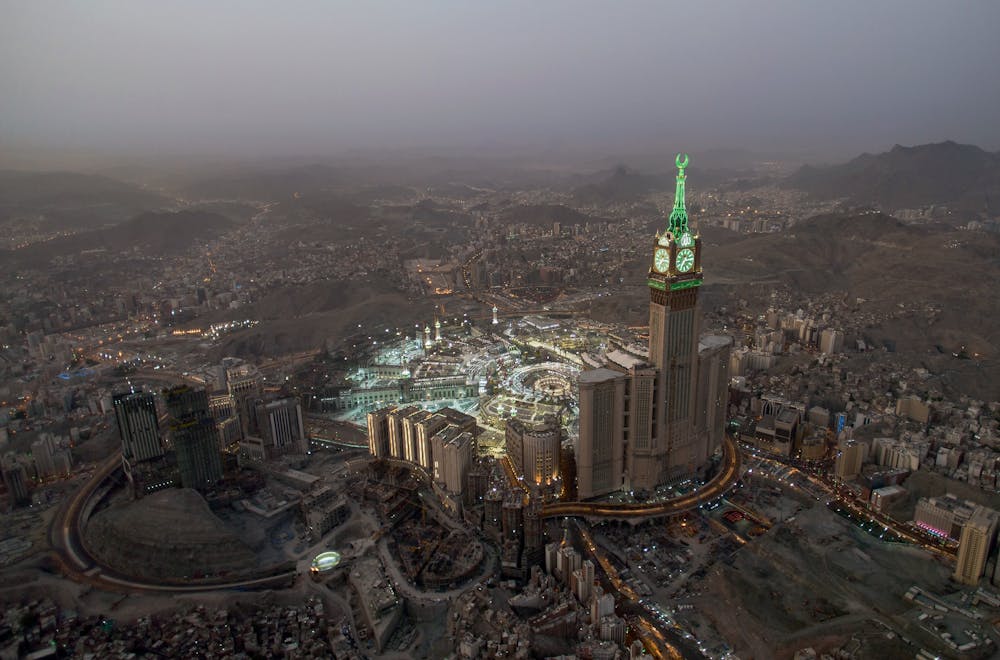
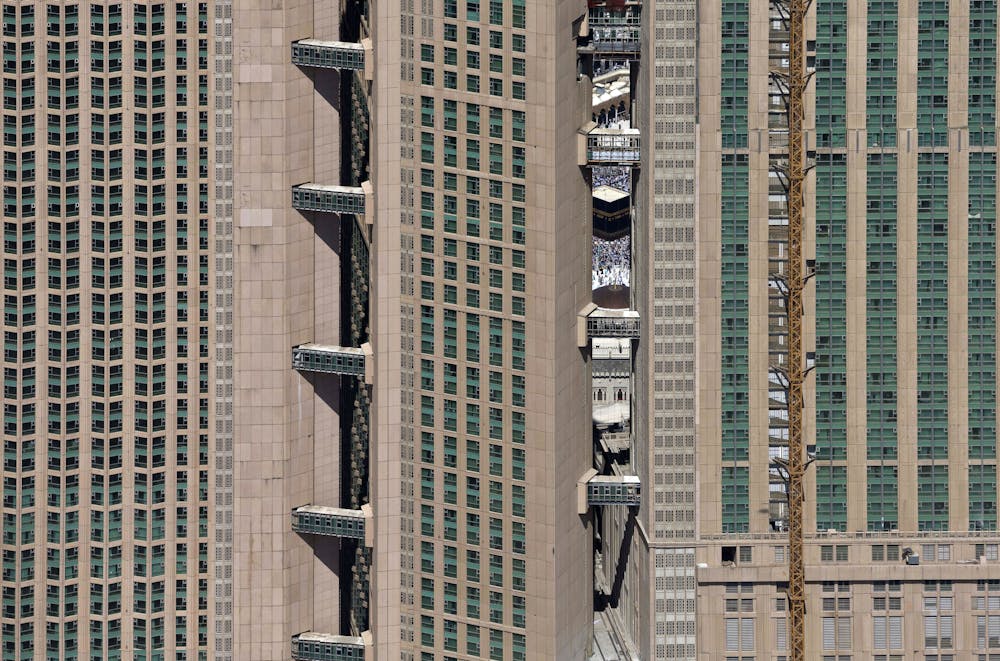
The presentation was anchored by a suite of photographs from the series Desert of Pharan, published as a book, Desert of Pharan: Unofficial Histories behind the Mass Expansion of Mecca (Lars Müller Publishers, 2016), the artist’s monumental, multiyear documentary project that captures the voices and experiences of Mecca’s inhabitants and hajj pilgrims. Desert of Pharan is an unofficial history of the social and political life of the city within the global context of the Muslim diaspora. Photographs on view document the influx of wealth into the city, including images of luxury hotel rooms with views of the Mecca Royal Clock Tower, as well as the lives of workers on construction sites, among them the large population of Rohingya who have immigrated to the city from Myanmar (formerly Burma) for decades.
As Mecca is a city that can be visited only by Muslims, I was drawn to Mater’s work as a window into a place and a cultural experience many people in the world will never have the opportunity to see first-hand. Before becoming an artist, Mater practised as a medical doctor who specialized in community health, and his sensitivity to the implications of social well-being on an individual and a communal level, as reflected in the rapidly changing city, makes Mecca Journeys both a monumental cultural document and a highly personal exploration.

















































